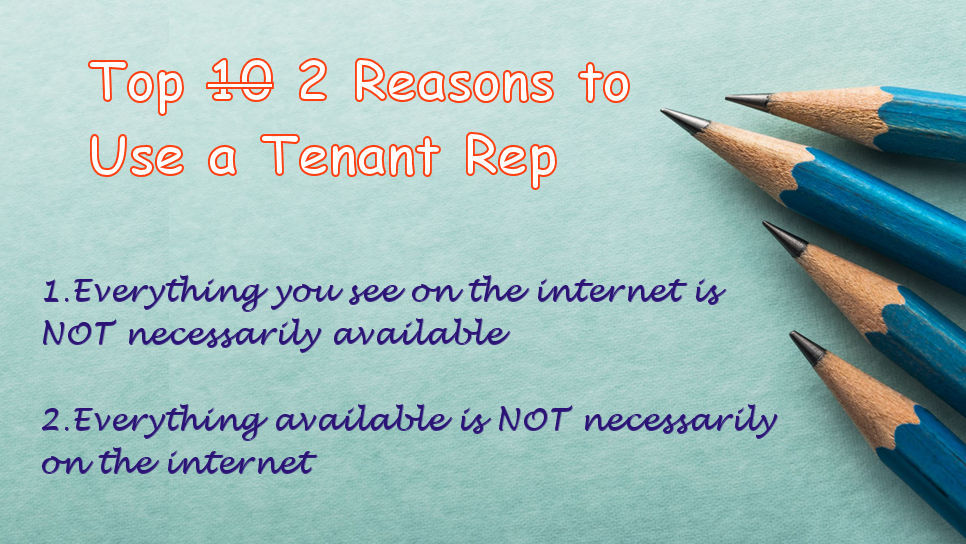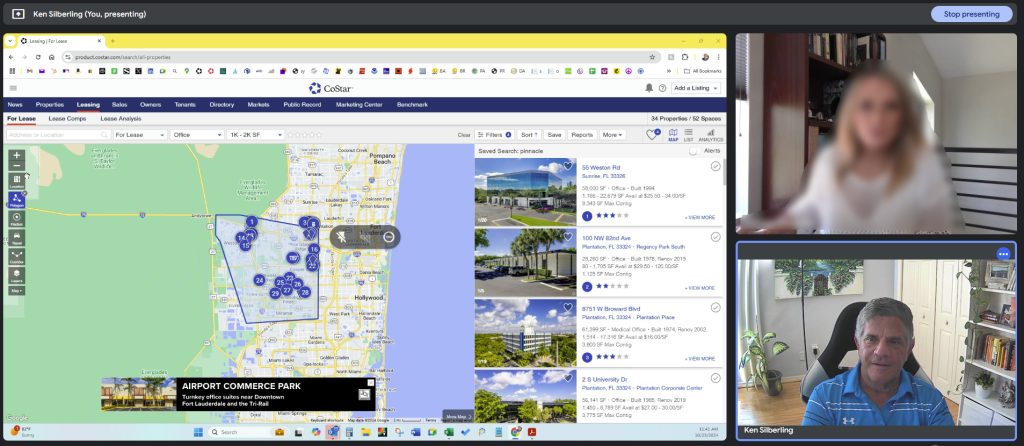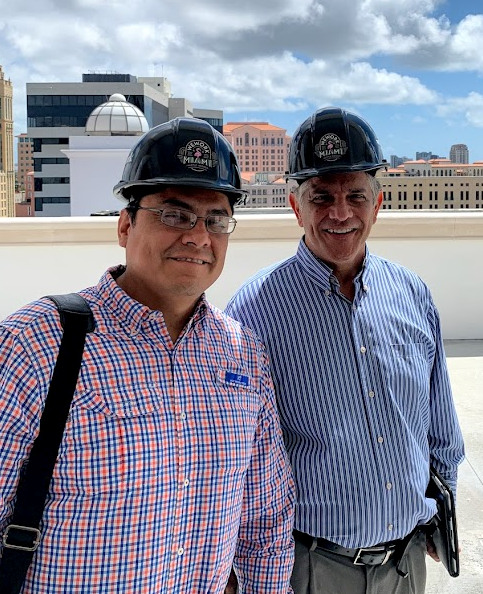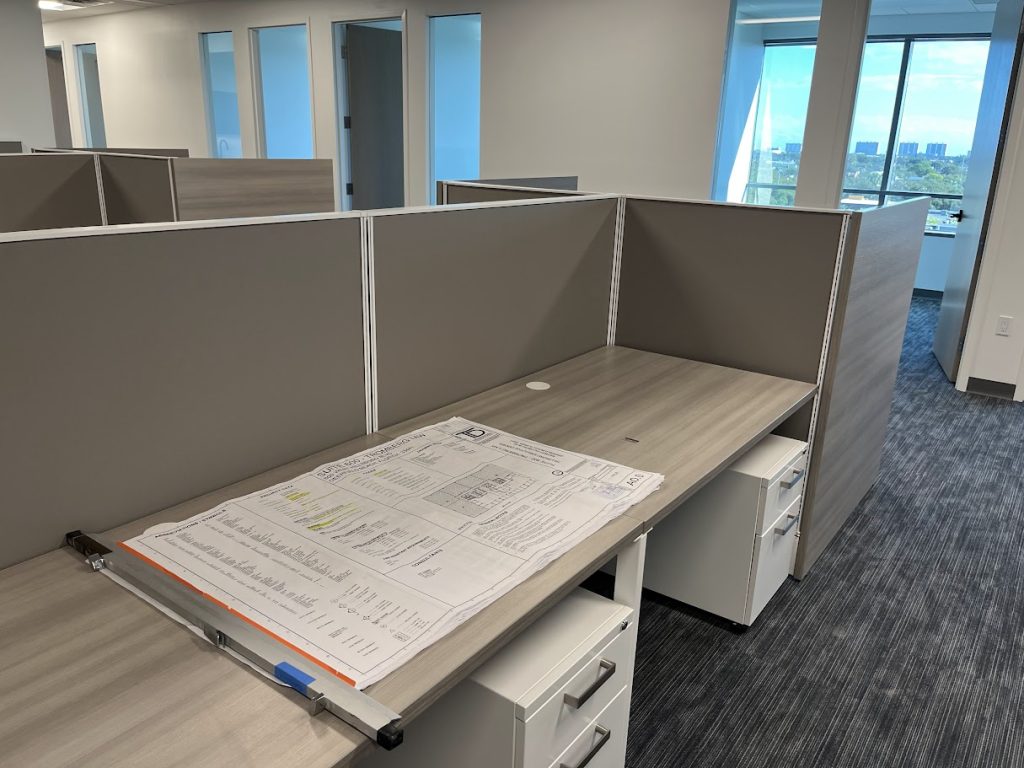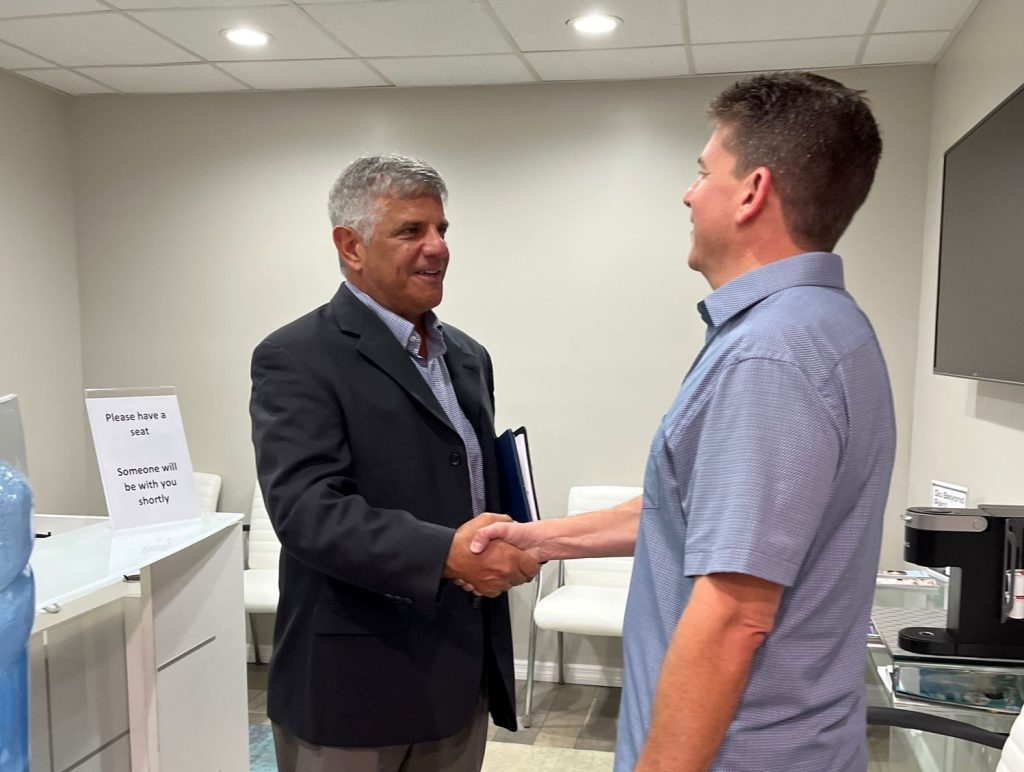
A successful transaction relocating a chiropractic office after 32 years in the same location. Client loves his new space and saved 25% on his rent.
I am a commercial tenant representation specialist. My job is to “Put Businesses in Their Place.” I help find tenants and buyers the best terms on the ideal space for their business. I can represent my clients at any property in the market. My fee is paid by the landlord, so there is zero cost to my clients.
I specialize in Office and Industrial Space in the South Florida Markets of Miami-Dade, Broward and Palm Beach County. I am passionate about helping my clients, I am one of the best in the business and my clients tend to agree.
Why is that and how do I do it? I usually try to explain that in 50 words or less in an initial email. Want to know more?
I thought it would be useful to provide a guide to the tenant representation process. There’s a lot to it. Entire books have been written about it. Each of the following steps can be an entire chapter or blog post. There is an entire tenant representation section on KensTrends. But to put it all in one place, here is an overview in my own words of my personal approach to tenant representation in 2024. My goal is for you to appreciate the value I bring and demonstrate why I should be an essential member of your team.
1. The Requirement – My initial step is to get to know the client and the business. From there we can generate parameters for location, size, budget, layout and timing. Sometimes, it’s as simple as finding a place as close as possible to the client’s home. But we need to consider access to employees and markets, future expansion needs, and overall image for clients and for employee retention. It is also important to consider the reputation and stability of the landlord.
2. The Search – I then search the internet for properties that can meet the requirement. That is what I believe sets me apart. For the first 15 years of my career, I was a research specialist surveying owners and agents of every office and warehouse property in South Florida and tracking market trends. I am intimately familiar with nearly every property in the tri-county market. I can analyze a list of properties more accurately and in a fraction of the time that it would take others. That is why I often take on requrements that my competitors would not. I rely on internet sources like Loopnet/CoStar and CREXI and receive dozens of property emails every day. But things are changing faster than the internet can keep up. I live by my two key reasons for using a tenant rep. By knowing the properties and knowing the players, I can uncover hidden opportunities. I can also rapidly identify the best values in the market for my clients. Owners and agents can be deliberately vague about their rental structure. I make sure my clients understand their total cost of occupancy at the alternative locations. Sometimes, the most difficult part is getting someone to return a phone call, email or text. It is helpful to be well known, liked and respected in the market. Both my clients and those in my industry appreciate working with me because I am professional, knowledgable, responsive and respectful. I can often get answers when other people can’t. My initial search generally yields a list of 20 to 30 properties, but that can vary widely.
3. The Review – This is one of the most important steps in the process. Technology has made it significantly more effective. Using screen sharing via Zoom or Google Meet, I can share my screen to review floorplans, pictures, pricing, maps and aerials in an initial consultation. We can virtually tour a market in 30 to 45 minutes. This helps me to understand what is important to the client while also helping the client to better define their own needs. I also provide my own “color commentary” demonstrating my knowledge and insight about properties, owners and markets to make my clients comfortable that they are working with one of the best in the business. Another new technological innovation is my use of LeaseUp, an interactive platform that allows me collaborate with clients to share property information on a real-time online portal.
4. The Tour – Yes, technology makes the entire process more efficient, but at some point you need to get out to see and feel the space. I try to keep a tour to 5 or 6 properties, sometimes less. After a few properties, they tend to run together and it can lead to fatigue and confusion. My job is to keep everything well organized and allow the tenant to understand the strengths and weaknesses of each alternative. I always provide a pdf and hard copy of the tour book with plans, pictures and pricing.
There is an art to setting up a tour. We want to do it quickly and efficiently for the client, but it often requires cooperation from 5 or 6 owners and agents. I don’t want to waste my client’s time, I respect my fellow agents’ time and of course I need to manage my own time. It is from years of experience that I can make my tours highly efficient and informative. As this is the first time when the client can truly experience their new space, it is the most exciting step in the process and I try to make it the most enjoyable.
5. The Short List – After the tour, we usually have a good idea of our ideal property. I generally provide a spreadsheet comparing monthly costs for the alternative properties. But even if the client has their heart set on one property, I like to pursue at least two or three. One of my most important objectives is to create competition among the landlords to give us the most leverage in negotiations. I have also had landlords lease a space out from under my client. There may also be unfavorable terms in a landlord’s lease that are dealbreakers. There are a host of other reasons to choose an alternate space. It’s always important to have a plan b and probably a plan c.

Short list for a Boca Raton office requirement. This provides an apples-to-apples comparison of the alternative locations and boils it down to a monthly cost of occupancy. I have developed temaplates to analyze diccounted cash flow analysis, but this works fo 99% of cases.
6. Negotiation – Negotiation is generally initiated via a letter of intent. The letter of intent covers all the business terms of the lease. Square footage, rate, lease term, annual increases, operating expenses, free rent (if any), deposits and tenant improvements are the key points. Additional factors may come into play depending on specific tenant needs. Parking, signage, and personal guaranties are all on the table. Tenant improvements are another crucial area of lease negotiation. Will you be getting a turnkey buildout? If so, what items are included and what are the levels of finish and materials that will be used. Will you get an improvement allowance, and what are the conditions necessary for the landlord to release funds. A letter of intent is always nonbinding, and a lot of people don’t believe it’s worth the paper it’s written on (even if it’s in a pdf). But putting everything in writing provides a firm foundation for negotiating the final lease terms.
7. Lease Review – Once the letter intent is negotiated and accepted by landlord and tenant, the landlord will draft a lease. Each landlord has his or her own lease template and no 2 leases are the same. Terms can vary widely. It takes a trained professional to review a lease and tenants should never blindly sign a document. Leases should always be reviewed by a real estate attorney. In addition, I have reviewed hundreds of leases. I know what items to look for and will often catch business terms that an attorney may miss. I always tell my clients “You don’t know what you don’t know and what you don’t know can cost you.” But from years of experience, I know. Many leases can contain ticking time bombs that can cost the tenant a lot of money over time. Those include, but are not limited to HVAC repair and replacement, hidden insurance costs which may include windstorm deductibles, and “double dipping” on operating expenses. As stated above, tenant improvements need to be carefully reviewed. If it’s not in the lease, chances are it won’t be in the finished space.
8. Move-In – If we’ve gone through steps 1-7, we should have accomplished our number 1 objective for move-in which is “no surprises. ” Move-in day is always stressful. We need to know that all of tenant improvements are finished, that we have phone and internet, we need to make sure we have our general liability insurance approved in order to be issued keys, and we need to have our movers and furniture installers mobilized. As a tenant, you will be establishing a long-term relationship with your new landlord and vice-versa. It is important for both sides to get off on the right foot. When I worked the landlord side, I always said that lease renewal starts on move-in day. The landlord-tenant relationship is adversarial by nature. But it doesn’t have to be. “No surprises” means that both landlord and tenant expectations have been met or exceeded. The landlord benefits financially through cash flow and enhanced property value while gaining an advocate who can draw other quality companies to his or her property. The tenant meanwhile receives a highly functional place of business assuring peak productivity, operational efficiency and high employee retention.
9. Follow Up – You never know when issues may turn up in your lease. Is the landlord living up to their obligations? Did they miss something in a buildout? Are they overcharging for operating expenses? Or are you outgrowing your space and need to expand? Have things changed so you need to downsize? Has you sold your company requiring an assignment of your lease? I am always available for my clients to address their changing needs. I strive to be a valued member of your team years after the initial lease to help you navigate what can be a very challenging commercial real estate market.

